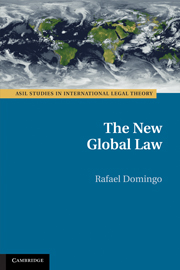3 - International Law, a Modern Concept
Published online by Cambridge University Press: 06 July 2010
Summary
FROM IUS GENTIUM TO IUS INTER GENTES
The discovery of the New World (1492), the breakdown of the Christian world with the Reformation that started with Martin Luther (1517), and the birth of the modern state – these were the events that laid the foundation for new theorizing about ius gentium. The theologians and jurists of the Salamanca School have pride of place, and among them Francisco de Vitoria and Francisco Suárez stand out. The thinking of this school is doubtless the greatest Spanish contribution to the science of law.
The father of this important turn of events is Francisco de Vitoria, the illustrious Spanish theologian. At the beginning of the third section of his Relectio de Indis, delivered at the University of Salamanca in January 1539, he argues in favor of Spain's voyages to the New World and her permanent presence there. In his speech, he replaces the word homines in Gaius' formulation of ius gentium with gentes, thus emphasizing the idea that this law is fundamentally between peoples and nations (quod naturalis ratio inter omnes gentes constituit, vocatur ius gentium). He uses the word nationes as a synonym for gentes to convey that in every nation it is inhuman not to welcome guests and strangers without good reason. Thus, Vitoria opened the door to the concept of the law of nations, which is currently the public international law.
- Type
- Chapter
- Information
- The New Global Law , pp. 22 - 50Publisher: Cambridge University PressPrint publication year: 2010
- 1
- Cited by



